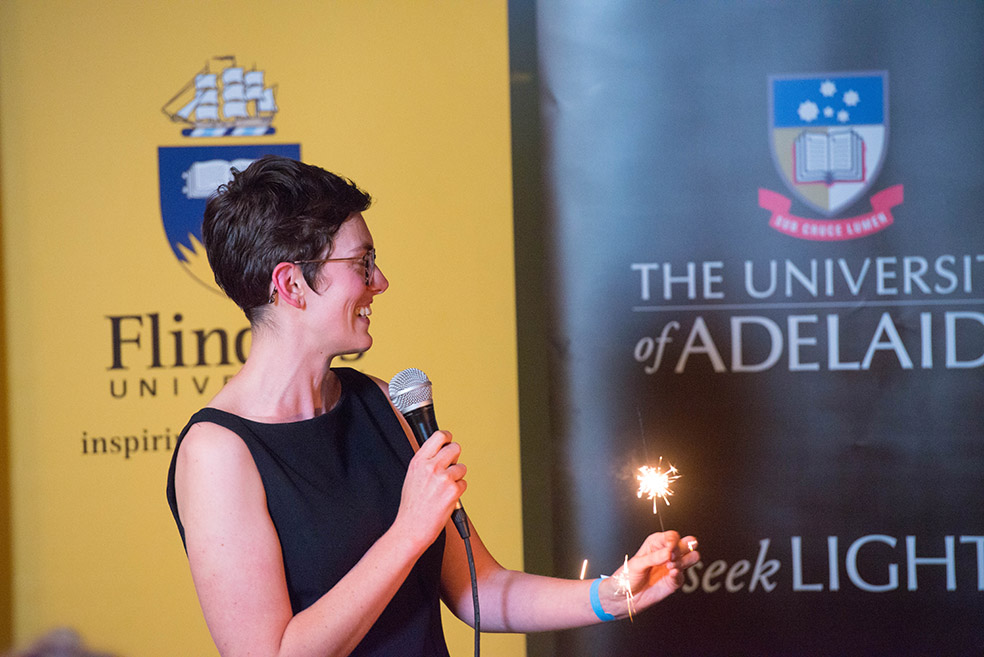This is a guest post by PhD candidate Jenna Crowe-Riddell (@jcroweriddell), who participated in the Science Communication competition Fresh Science.
Imagine you’re standing on a stage holding a lit party sparkler and you’ve been told to explain your research in the time it takes for the sparkler to go out. Oh, and your family, friends and supervisor are waiting expectantly in the audience. Sound terrifying? Welcome to Fresh Science!
I research the sensory systems of sea snakes and I’m passionate about science communication. Snakes in Australia often get a bad rep because of their venomous proclivities but they have a sensitive side. During an underwater survey to Hibernia Reef in the Timor Sea, we saw a turtle-headed sea snake courting a female. We noticed that the male used a combination of sensory cues to keep up with the female: following her as she swam (visual), probing her with the tip of his snout (tactile) and re-visiting sites of previous courtship (spatial memory). After five minutes of courting the male lost contact with the female and was unable to locate her, despite her being within one metre of him. These results bring up fundamental questions on how sea snakes sense their underwater world. I applied for Fresh Science because I wanted to be able to communicate these results in an engaging and relevant way.
Fresh Science selects 10 researchers in each state and provides two days of media training in which we practiced interviewing techniques with journalists from three types of media (TV, print and radio). The training culminated by bringing all our new knowledge together in a pitch for High School students and the public at the Science in the Pub event.
Over the two days I learned to find the ‘key message’ of my results. My immediate inclination was to tell my story in the sequence of a journal article. Unfortunately, this approach often means that the key message of the research is buried under a heap of other information that, while important for journal articles, tends to make people’s eyes gloss over.
The key? Tell the results first then explain why it matters.
Pitching to journalists also gave me perspective on their respective media formats and audiences. I realised that good communicators must to be great empathisers. Assume they are intelligent but non-specialised, say the key message first and keep your conclusion pertinent to that message.
Through my experience in Fresh Science experience I realised that in training scientists to communicate we need to go beyond the ‘Elevator Pitch’. I believe that my results, and evolutionary biology in general, has the potential to capture the public imagination and ignite appreciation for Australia’s unique environments. A greater appreciation and understanding of biological systems has flow on effects in society like inspiring people to study Science and promoting conservation, especially the need to protect less ‘charismatic’ species like snakes. I realised that my research resonates with people, especially high school students, and that my enthusiasm for biology can inprie others to engage in Science.
Overall, the Fresh Science experience showed me how relevant my research can be. The sensory world of sea snakes has natural public appeal (especially for school children!) that can be leveraged to promote conservation management and scientific literacy.
All Image credits are to Fresh Science Media, taken over the three days.





